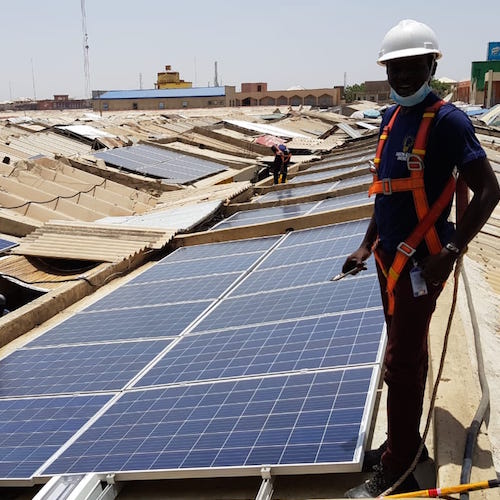Exorbitant electricity bills never stop coming, yet lengthy power cuts dog 58-year-old Olanrewaju Jaji’s shop where she sells soft drinks in Ikorodu, a border town north of Nigeria’s economic nerve centre, Lagos.
She had bought different sizes of generators, but they hardly lasted. She had almost given up until a flicker of hope came to her doorstep: a low budget solar-powered appliance advertised to her by a local merchant.
A one-off payment for the appliance would cost her N52,000, she was told, but payment in instalment would be higher. Even at that, the appliances are only available for distribution in Lagos.
Although the installation cannot power any of her three freezers, the fact that she can light up her shop at night, power her fan and radio – her major source of news – gave her some respite.
Take irregular power supply away from business owners like Mrs Jaji, then 80 per cent of Nigerian businesses would have solved their second biggest challenge after lack of access to finance.
If the same is done to individuals, then around 55 per cent of Nigerians, per a government report, who have no access to grid-connected electricity, would also have a major burden taken off.
Nigeria’s power generation capacity, which consists of gas-fired and hydro-powered stations, is about 13,000 Megawatts, but the electricity transmitted remains less than 4,000MW/hour.
This is unlike South Africa, a country with less than a third of Nigeria’s population, which has an installed electricity capacity that is four times more than Nigeria’s, according to the U.S. Power Africa programme.
Again, South Africa’s per capita energy consumption is 31 times higher than Nigeria’s, even though the southern African nation is Africa’s second-largest economy.
